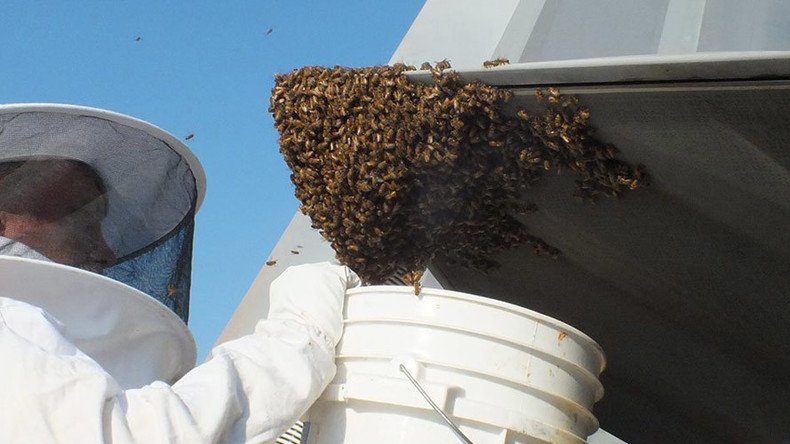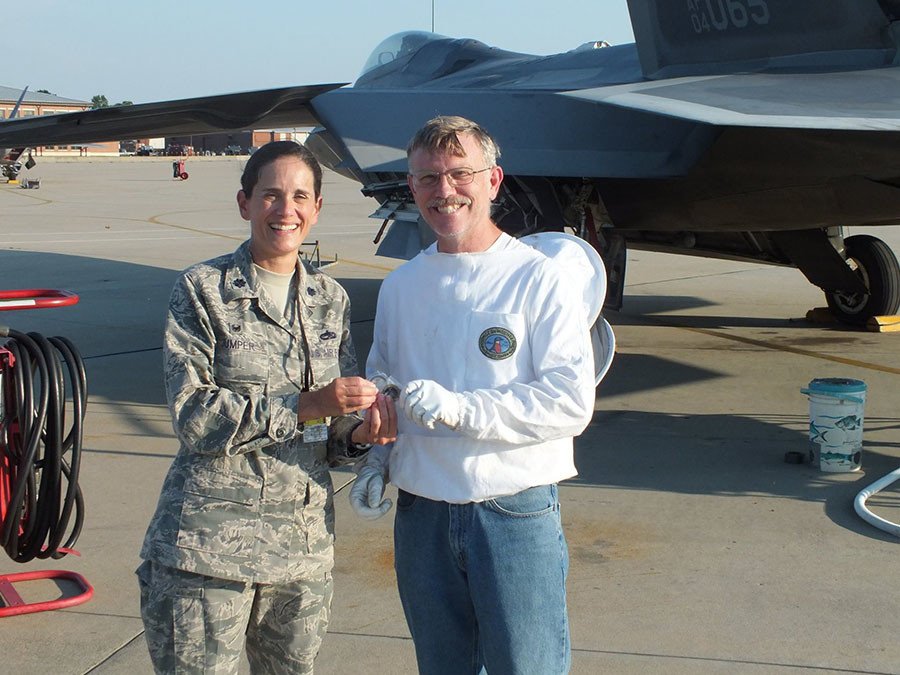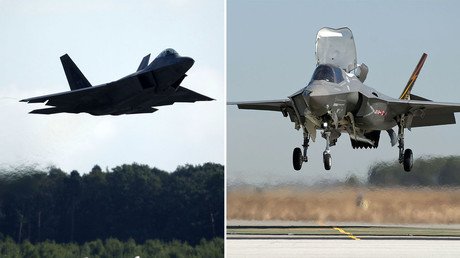Sticky situation: Swarm of honeybees blocks F-22 fighter

It may be a $150 million warfighting machine, but one F-22 Raptor was totally stumped when a swarm of 20,000 honeybees blocked the jet’s exhaust at one air base in Virginia. The stealth fighter was eventually rescued by a local beekeeper.
Maintenance crews from the 192nd Fighter Wing of the Virginia Air National Guard at Joint Base Langley-Eustis were in for quite a shock when they discovered the swarm on the F-22’s exhaust nozzle. Their initial reaction was to run away and find someone to “get rid of the bees,” the squadron reported on its Facebook page.
“I was shocked like everyone else because it looked like a cloud of thousands of bees,” said Tech Sergeant Jeffrey Baskin, a maintenance crew chief, “but I knew they wouldn’t sting anyone and were just looking for a new place to live.”
The war has begun and the bees have already won the first engagement https://t.co/bOgCC2Kgnl
— Rusty Foster (@rustyk5) August 12, 2016
Captain Katie Chiarantona, in charge of aircraft maintenance, called the on-base entomologist, who said he did not have the means to remove the bees – but knew someone who could. He referred Chiarantona to a local beekeeper in nearby Hampton, Virginia, a US Navy veteran named Andy Westrich.
Westrich was escorted to the F-22 and carefully vacuumed the bees off the airplane and into buckets adapted for the purpose. When he weighed the swarm, it came in at eight pounds (3.6 kg), so he estimated the number of bees at almost 20,000. According to Chiarantona, Westrich called it one of the largest swarms he had ever seen.
“The honey bees most likely came from a much larger bee hive somewhere else on base,” said Chief Master Sergeant Gregg Allen, who also happens to be a beekeeper. “Bee hives are constantly growing and they eventually become overcrowded. Around springtime, the bees will make a new queen, scout for a new location and take half of the hive with them to that location.”
The warm exhaust nozzle of the fighter jet must have seemed like an inviting place for the new queen to take a break. The bees could have either continued their journey the following morning, or “would have decided that the jet engine would be a great place to build a hive,” said Chiarantona, quoting Westrich.
Fortunately for everyone, the F-22 was rid of the swarm, and Westrich ended up finding the bees a new home at a hive operated by a local brewery. As a token of gratitude, the wing’s Maintenance Squadron commander presented Westrich with a “challenge coin.”

Though the incident at Langley-Eustis happened on June 11, the squadron only reported it on Facebook this week.
It was not the last bee swarm the US Air Force has had to deal with this summer, either. In late July, airmen from the security detail at the 341st Missile Wing found a swarm of some 25,000 bees near the combat arms training and maintenance range at the Malmstrom Air Force Base in Montana.
The squadron reached out to a retired officer – a master beekeeper – who recovered the swarm without a single person getting stung.
Bee populations across the US have been in alarming decline, with beekeepers reporting a 44 percent loss in colonies between April 2015 and April 2016.














